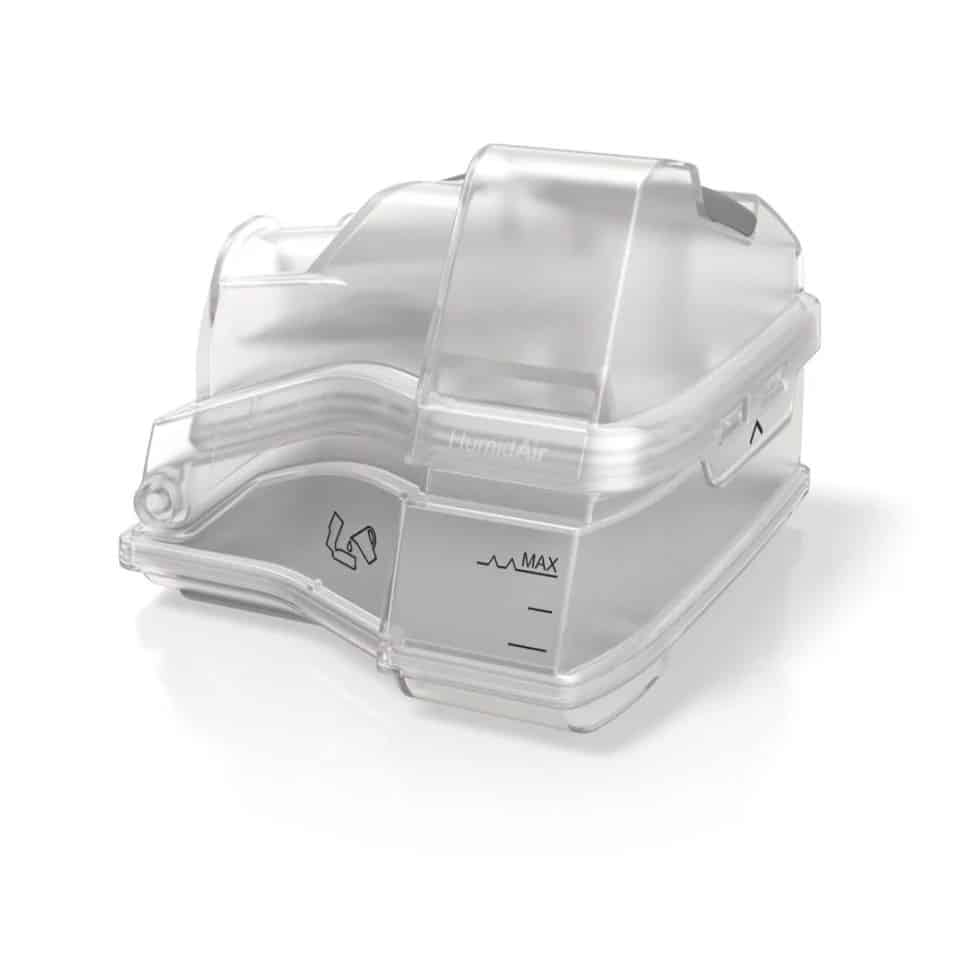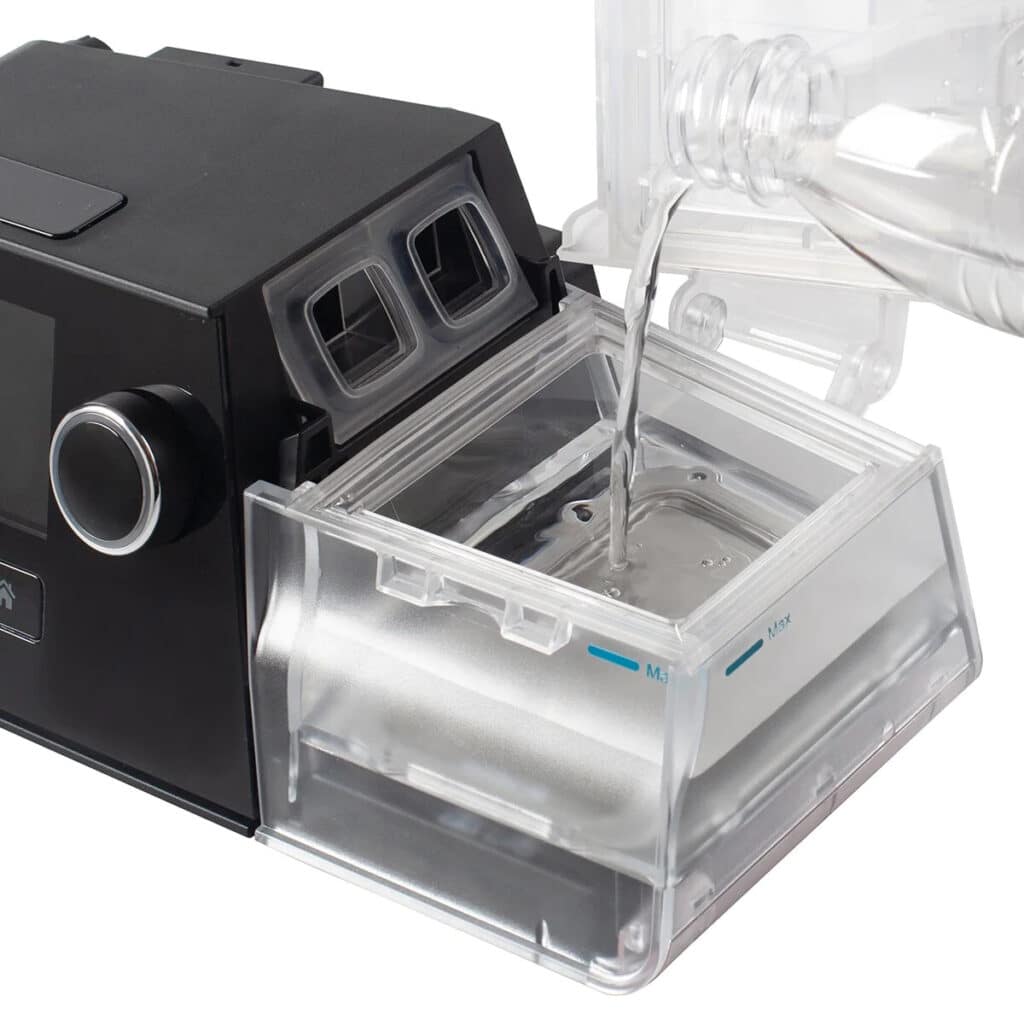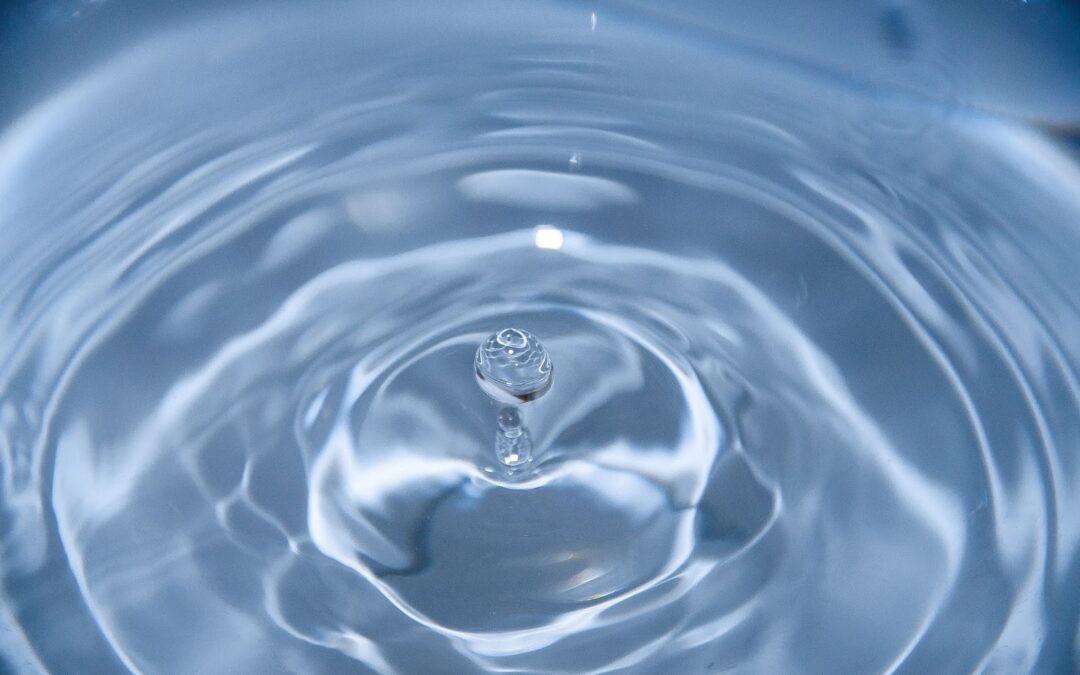Picture this: you’re using your CPAP machine to treat your sleep apnea, but you’re still plagued by dry mouth, a sore throat, and an irritated nose. What could be the missing piece to the puzzle? The answer lies in humidification. With proper humidification, you can experience a drastic improvement in your overall CPAP therapy experience.
In this post, we’ll explore the importance of humidification, the different types of CPAP humidifiers, how to personalize your humidification experience, and proper maintenance and care for these devices. Let’s dive in!
Key Takeaways
- Understanding the importance of humidification in CPAP therapy is essential for providing comfortable and effective sleep apnea treatment.
- Humidifiers come in both integrated and standalone varieties, allowing users to customize their experience according to individual preferences.
- Proper maintenance and care of CPAP humidifiers can help prevent bacterial growth, mold, dryness, or discomfort while improving breathing quality during sleep.
Understanding the Importance of Humidification in CPAP Therapy

Humidification in nasal continuous positive airway pressure (CPAP) therapy serves to alleviate discomforts such as dryness and nasal irritation by introducing moisture to the air, thus enhancing the overall therapy experience. CPAP humidifiers come in various design styles, including integrated, Passover, and heated humidifiers. A CPAP humidifier ameliorates typical side effects of respiratory tract dryness, making sleep apnea treatment more comfortable and reducing the intensity of ordinary CPAP side effects.
The Science Behind Humidification
CPAP users prefer heated humidification because they can adjust it to provide additional humidification and it may be more comfortable for certain users.
Passover humidification, on the other hand, introduces moisture to the atmosphere without heating it and may be advantageous for those who are sensitive to heated humidification or inhabit a humid climate. A heated humidifier employs heat to maintain more water in the air, whereas a passover humidifier relies on air passing over the surface of the water in the chamber until it reaches the necessary moisture level for sleep apnea patients.
Humidification should typically be ordered upon initiation of CPAP, as any delay in enhancing patient comfort and tolerance may lead to patients abandoning therapy. Excess condensation or “rainout” in the CPAP delivery tube can decrease applied inspiratory pressure, rendering the delivered pressure lower than that prescribed to abolish all respiratory events. Moreover, inadequate cleaning of masks, hoses, and humidification chambers may increase the risk of upper airway infections.
Also Read: CPAP Machine: Is Tap or Purified Water Best for Your Humidifier?
Addressing Common CPAP Discomforts with Humidification
Heated humidification helps users of CPAP machines to minimize the chances of:
- sore throat
- dryness
- sinus infections
- runny nose
Moreover, it will also help them in breathing through their nose while sleeping. CPAP rainout is another common issue faced by patients with obstructive sleep apnea syndrome and other sleep-related breathing disorders, referring to the sudden splash of water reaching the face due to the collection of condensation in the CPAP tube.
Types of CPAP Humidifiers: Integrated vs Standalone
CPAP humidifiers come in two primary types: integrated and standalone.
Integrated humidifiers are incorporated into the CPAP machine, whereas standalone humidifiers constitute a separate setup.
When selecting a CPAP humidifier, factors to consider include:
- Compatibility with the CPAP device
- Durability
- The manufacturer’s recommendations
- The cost
Though both types of humidifiers offer advantages, you should assess your individual needs and preferences to choose the most suitable option.
Let’s explore the differences, advantages, and disadvantages of integrated and standalone humidifiers.
Integrated Humidifiers
Integrated humidifiers are designed to connect directly to a specific device or system without any additional tubing or connections, adding moisture directly into the airflow of the device or system it is integrated with. The advantages of integrated humidifiers include ease of use and maintenance, as well as not requiring additional power sources or separate setups.
For those who often travel or need higher humidity levels, integrated humidifiers are a convenient option suggested by some manufacturers. Integrated humidifiers, directly incorporated into the CPAP machine, provide a streamlined and efficient solution for users seeking an effortless humidification experience.
Standalone Humidifiers
Standalone humidifiers, on the other hand, provide greater flexibility in settings and are typically simpler to clean and maintain. They could be suitable for individuals who require more personalized settings or who prefer a distinct unit for easier upkeep. Standalone humidifiers are available in different varieties, including cool mist, evaporative, and ultrasonic.
When considering a standalone CPAP humidifier, ensure it’s compatible with your CPAP device. Although standalone humidifiers may require additional setup and connections, they offer users the ability to tailor their humidification experience to their specific needs and preferences.
Personalizing Your CPAP Humidification Experience

To personalize your CPAP humidification experience, follow these steps:
- Find the right humidity level for your preferences and therapy requirements.
- Adjust the heated tubing settings according to your preferences.
- Before altering any settings on your CPAP device, make sure to follow the manufacturer’s and your medical practitioner’s guidelines.
Properly personalizing your humidification settings can significantly improve your therapy experience, helping to alleviate common discomforts and ensure optimal therapy outcomes. Let’s delve deeper into finding the right humidity level and adjusting heated tubing settings.
Finding the Right Humidity Level
Finding the right humidity level can help reduce discomfort and improve therapy compliance. Experts generally recommend setting the optimum humidity level for CPAP therapy at level 3. Nevertheless, it is essential to adjust the humidity level in accordance with one’s individual comfort and requirements.
A hygrometer is an effective tool for monitoring and measuring air humidity, ensuring the correct humidity level is set.
If you encounter difficulties with the humidity level, it is imperative to inspect the water chamber and tubing for any clogs or leaks, replenish the water chamber if necessary, or replace the tubing if it is cracked or impaired.
Adjusting Heated Tubing Settings
Heated tubing for CPAP therapy is designed to maintain a stable temperature and humidity level from the CPAP machine to the airway, utilizing heating coils to prevent condensation and preserve the warmth of the air as it passes through the tubing. Adjusting heated tubing settings can help prevent rainouts and ensure an optimal therapy experience.
You can adjust the settings for heated tubing on the CPAP machine to tailor the temperature and humidity levels to your requirements. Bear in mind that you must adjust the settings in accordance with the manufacturer’s instructions.
Regular inspection of the settings and cleaning the tubing can help maintain optimal heated tubing performance and prevent potential issues.
Also Read: How to Manage CPAP Mask Water and Prevent Rainout
Proper Maintenance and Care for CPAP Humidifiers

Source: cpapx
Caring for your CPAP unit and its humidifier involves several steps, such as cleaning and replacing the water chamber, preventing bacterial growth and mold, and utilizing heated tubing to avoid rainout.
Cleaning and Replacing the Water Chamber
Regular cleaning and replacement of the water chamber ensure optimal performance and longevity of the humidifier. It is suggested that distilled water be used for filling the humidifier, as it has been purified of most external minerals, heavy metals, and contaminants which are usually present in tap water. Using tap water can lead to the formation of deposits and buildups within the machine, potentially causing damage or increasing its operational effort.
You should substitute water chambers every six months. To clean the CPAP humidifier, follow these steps:
- Submerge the humidifier tub in warm water with a mild dishwashing liquid or a solution of 1 part vinegar and 9 parts water.
- Rinse thoroughly with warm, drinking-quality water.
- Allow the tub to dry on a flat surface.
Preventing Bacterial Growth and Mold
It is imperative to prevent bacterial growth and mold in CPAP humidifiers in order to ensure a healthy and safe therapy environment. Here are some tips to help prevent mold growth:
- Utilize distilled water to inhibit mineral accumulation that mold can utilize as a nutrient source.
- Consistently replace the water in the humidifier tank.
- Clean the humidifier tank at least once a week.
By following these tips, you can help prevent mold growth and maintain a clean and safe CPAP humidifier.
The most effective method to prevent bacterial growth and mold in CPAP humidifiers involves daily cleaning of the humidifier chamber with vinegar, soap, and water, ensuring it is thoroughly dry. By taking these preventative measures, you can protect yourself from potential health risks and maintain a clean and comfortable therapy environment.
Conclusion
Humidification plays a crucial role in enhancing the CPAP therapy experience by alleviating common discomforts and improving overall therapy adherence. Users can customize their CPAP humidifier experience with integrated and standalone models. Cleaning and refilling the water chamber is vital to prevent bacterial growth and mold. For optimal maintenance and enhanced comfort, check out this selection of CPAP humidifier accessories. Ensuring your humidifier’s effectiveness not only guarantees better therapy results but also extends its lifetime.
Frequently Asked Questions
Why is humidification important in CPAP?
Humidification is important in CPAP as it provides extra moisture to keep nasal passages and sinuses hydrated, preventing or alleviating certain side effects such as sore throat, sinus inflammation, nasal congestion, and nosebleeds.
What happens if I don’t use the humidifier on my CPAP?
Without using a humidifier with your CPAP, you may experience dry airways, congestion, which can contribute to feelings of increased nasal airway resistance, coughing, and difficulty sleeping
What is the recommended maintenance and care for CPAP humidifiers?
Maintaining and caring for CPAP humidifiers involves regularly cleaning and replacing the water chamber, in order to prevent bacterial growth and mold.
What are your key takeaways from this post?



